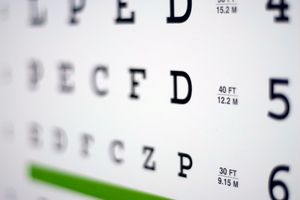It's safe to assume that you've stumbled upon the terms visual acuity and twenty-twenty vision. As common as these terms may be, do most people actually grasp what they mean?
The term 20/20 vision is used to indicate the clarity of your vision measured at a distance of 20 feet. If you've been told you have 20/20 vision, that means that from twenty feet away you're able to accurately see that which should be seen from that distance. 20/20 is just a standard measurement. Actually, a considerable number of people have vision that's better than 20/20; for instance, vision that measures 20/15, so what they would be able to see at 20 feet, a person with normal vision might only be able to discriminate as close as 15 feet.
Each eye is tested on its own. During the part when you're asked to read the letters on the eye chart, the smallest row that you can read accurately indicates the visual acuity of the eye being examined.
20/20 vision doesn't always mean your vision is perfect, and that's because it only determines how good your vision is at a distance. There are lots of equally necessary vision skills; being able to focus on objects that are close by, contrast sensitivity, peripheral awareness, depth perception, eye coordination and color vision - these also contribute to your overall ability to see. And actually, a person who has 20/20 vision can still have unhealthy eyes. Even people who have damage to the sensory nerves within their eyes as a result of diabetes, high blood pressure, glaucoma, or numerous other conditions can still have 20/20 vision without needing to wear eye glasses. And because of this, an eye care professional always conducts a comprehensive eye exam, rather than just a simple eye chart test.
So the next time you book yourself in for a comprehensive eye exam, you'll understand what we're looking for when we ask you to read letters aloud from an eye chart!


